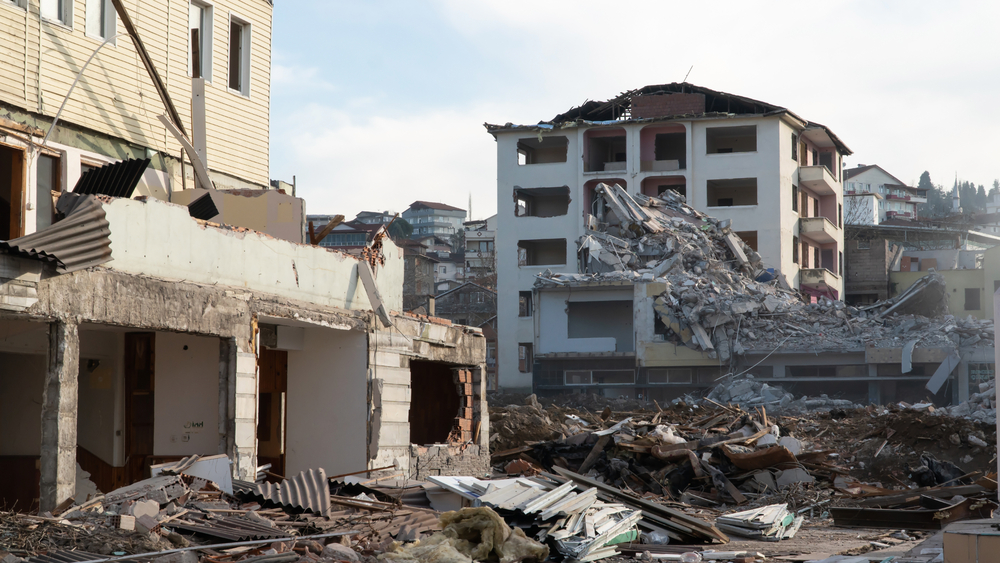please fill out the form. We're ready to receive your message.

The release date:2023/2/23 0:00:00
Disasters, whether natural or man-made, can cause significant damage to communities and their buildings. In the aftermath of a disaster, it is crucial to respond quickly and effectively to minimize damage and ensure the safety of those affected.

Dr. Haresh Jayaram, a Professor of Civil Engineering at the University of Maryland, has been looking for solutions for decades that combine building technologies and the recovery from disasters. In recent years, he and researchers like him have been focused on the field of smart building technology and its applications in disaster response and resiliency.
Based on the research of Dr. Jayaram and institutes like The National Institute of Standards and Technology (NIST) of the US, smart building technology has emerged as a solution to enhance disaster response and resiliency by providing real-time information, control, and automation of building systems.
Real-time Monitoring
One of the key benefits of smart building technology is its ability to provide real-time monitoring of various building systems, including electrical, HVAC, and structural systems. This information can be crucial in the aftermath of a disaster, allowing emergency responders to quickly assess the safety of a building and identify areas that may be at risk.
For example, if a building's electrical system is damaged during a disaster, this information can be immediately transmitted to emergency responders, allowing them to shut down the system and prevent any potential fires or explosions.
Or if a building has too low a temperature for the refugees, the smart thermostat will have its sensors automatically detect it and adjust the AC so that the room is a suitable shelter for the victims.
Automated Shutdowns
Smart building technology can also automatically shut down critical systems in the event of a disaster, reducing the risk of further damage and ensuring the safety of building occupants and emergency responders. For instance, if a gas leak is detected, the building's gas supply can be automatically shut off to prevent an explosion.
Communication Systems
Another advantage of smart building technology is its ability to provide an integrated communication platform that allows building owners, emergency responders, and occupants to exchange information in real-time. This can be critical in ensuring that everyone is informed and aware of the situation and that evacuation orders can be communicated quickly and effectively.
Power Backup
Smart building technology can also provide backup power systems, such as generator backup, to ensure that essential systems, such as lighting and communication systems, remain operational even if the main power grid is down. This can be critical in ensuring the safety of building occupants and emergency responders during a disaster.
Such power-backup systems require high-quality power units across the whole smart building system. HDL's KNX Tile Series Power Interface is trusted by high-end hotels across the globe for power voltage supply and power signal communication between the control panel and the power system.
Building Analytics
Smart building technology can also provide advanced building analytics, allowing building owners and emergency responders to analyze building data to identify areas of vulnerability and make informed decisions about evacuation and response.
For example, building analytics can help to identify which parts of a building are most at risk of structural damage in the event of an earthquake, allowing emergency responders to prioritize their response and evacuation efforts.
There are many types of sensors available in the market, and they can be mounted on walls, ceilings, and floors. For example, HDL's ceiling-mount 12-in-1 sensor is a versatile and convenient sensor for monitoring temperature, motion, and so on. They can provide valuable data for building analyses.
Remote Control
Finally, smart building technology allows building owners and emergency responders to remotely control building systems from a central platform, ensuring that critical systems can be quickly and efficiently managed in the aftermath of a disaster. This can help to minimize damage and ensure the safety of building occupants.
Also developed by HDL, the HDL ON App is a smartphone app that allows users to manage and control their smart devices remotely. It is essential to verify the impact a building takes immediately for more accurate first responses.
Conclusion
Incorporating smart building technology into properties can significantly improve disaster response and resiliency. By providing real-time information, automation, communication, power backup, analytics, and remote control of building systems, building owners can enhance the safety and security of their properties and communities.
Furthermore, smart building technology can also improve the efficiency of disaster response by providing emergency responders with the information and control they need to respond quickly and effectively.
The role of smart building technology in disaster response and resiliency is becoming increasingly important as the frequency and severity of disasters continue to rise. By providing real-time information, automation, communication, power backup, analytics, and remote control of building systems, smart building technology can significantly enhance disaster response and resiliency, protecting communities and their buildings in the face of any disaster.
Outstanding smart automation developers like HDL Automation have been dedicated to the research of smart building technology for decades. If you are interested in its application in disaster response and resiliency, you can discover its case studies on its websites.



